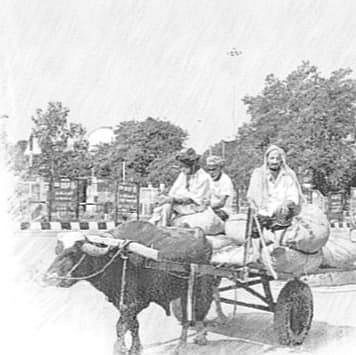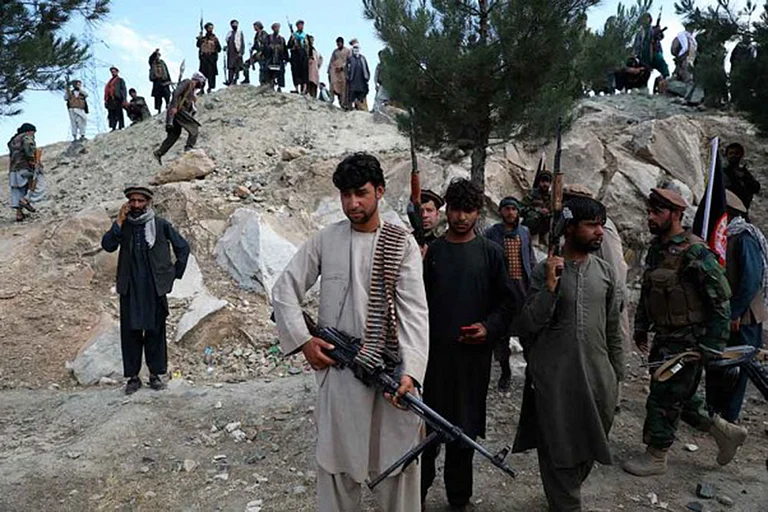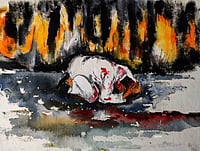The Attari-Wagah border crossing is the border between India and Pakistan; however, it is a symbol of both separation and unity at the same time. Since its creation in the year 1947, this border has seen historical events, tearful separation, and attempts towards reconciliation. Here, we will focus on analyzing the history and the events of the creation of Attari-Wagah border, main actors and events.
It was in the historic (in the Indian context) year of 1947, when Cyril Radcliffe was appointed as the chairman of the Boundary Commission and was supposed to draw the boundary line dividing India and Pakistan based on the demographic ratio in the given regions. He had to make decisions about the borders, taking into account factors like population demographics, religious affiliations, and geographical considerations. He had no experience in India and never been to the subcontinent before the occurrence of the incident. He was only allowed five weeks to do it, thus making the assignment very difficult and strictly within the time-line.

The partition forced millions of Hindus, Muslims, and sikhs to migrate across the newly established borders. People were uprooted from their ancestral home and compelled to move to the site of the borders that matched their religious identity. This migration led to immense suffering, loss of life, and significant property damage.
Indian feminist writer and activist Urvashi Butalia writes in her book that “In the space of a few months, about twelve million people moved between the new, truncated India and the two wings, East and West, of the newly created Pakistan. By far the largest proportion of these refugees —*more than ten million of them — crossed the western border which divided the historic state of Punjab, Muslims traveling west to Pakistan, Hindus and Sikhs east to India. Slaughter sometimes accompanied and sometimes prompted their movement; many others died from malnutrition and contagious disease. About 75,000 women are thought to have been abducted and raped by men of religions different from their own (and indeed sometimes by men of their own religion). Thousands of families were divided, homes were destroyed, crops left to rot, villages abandoned.”
Establishing the Wagah Check-Post: The Efforts of Brigadier Chopra

The then Governor of Punjab, Sir Chandulal Madhavlal Trivedi, visited the Joint Check Post at Wagah-Attari on the GT Road between Amritsar and Lahore, accompanied by Brigadier Mohinder Singh Chopra.
Mohindar Singh Chopra, through his journal, tells the riveting story of how the foundation of the modern-day Wagah border was laid.
On October 8, 1947, Brigadier Mohinder Singh Chopra was assigned to command the 123 Indian infantry Brigade in Amritsar. His mission was to petrol the post partition Punjab border, protect the frontier, and manage the migration of people amidst ongoing communal conflict.
Brigadier Chopra's appointment was a strategic decision. Born in Amritsar in 1907, he had a deep understanding of the region. A dedicated officer, he was among the first batch of King's Commissioned Indian Officers, graduating from the Royal Military College at Sandhurst in 1928.
He had served in Persia and Iraq forces and the Burma campaign during World War II. In July 1947, he oversaw security during the Sylhet referendum, which resulted in Sylhet joining East Pakistan.
In his journal, Brigadier Chopra recounts the challenging task of establishing the Wagah check-post on the newly drawn border, as there were no physical markers or pillars indicating the boundary that had divided the nation. Despite this, both he and his friend cum counterpart, Nazir Ahmad, were entrusted with the responsibility of 'protecting millions of refugees' on either side. They met in Wagah village, now on the Pakistani side, and unanimously agreed to establish a check post there. They chose a point between Wagah and Attari, villages belonging to Pakistan and India respectively, to mark the dividing line and facilitate the organized evacuation.
Despite the outbreak of the first Indo Pakistan war on October 22, 1947, their peace keeping efforts maintained calm in the Punjab sector. Both Brigadiers were later promoted to major general. Nazeer Ahmed sent a note to Chopra expressing hope that they would live up to the expectation they had set and serve the public well. He said “We hope and pray that we both now live up to the expectations we built up that day and also that of the public.''
Beating Retreat Ceremony at Attari-Wagah Border, Punjab

The Attari-Wagah border Beating Retreat Ceremony has been a daily military exercise since 1959. It has turned out to be a great tourist attraction as well as a symbolism and unity between the armed forces of both the countries.
The ceremony, which takes place just before sunset, begins with a parade by the soldiers from both the countries and culminating in the synchronized lowering of the national flags. The soldiers dressed in their immaculate uniforms perform an elaborate display of marching, high kicks, and aggressive posturing. The energy and enthusiasm of the troops are matched by the spectators who chant patriotic slogans (Jai Hind) and songs creating an electrifying atmosphere.
Timings
The ceremony starts at around 4:30 PM in the winter (October to March) and at around 5:30 PM in the summer (April to September). It is advisable to arrive an hour early to secure a good viewing spot, as the seating area can get quite crowded. The gates open at 3:00 PM in the winter and 4:00 PM in the summer. The entire ceremony lasts for about 45 minutes, offering a unique blend of military discipline, cultural pride, and entertainment.



























